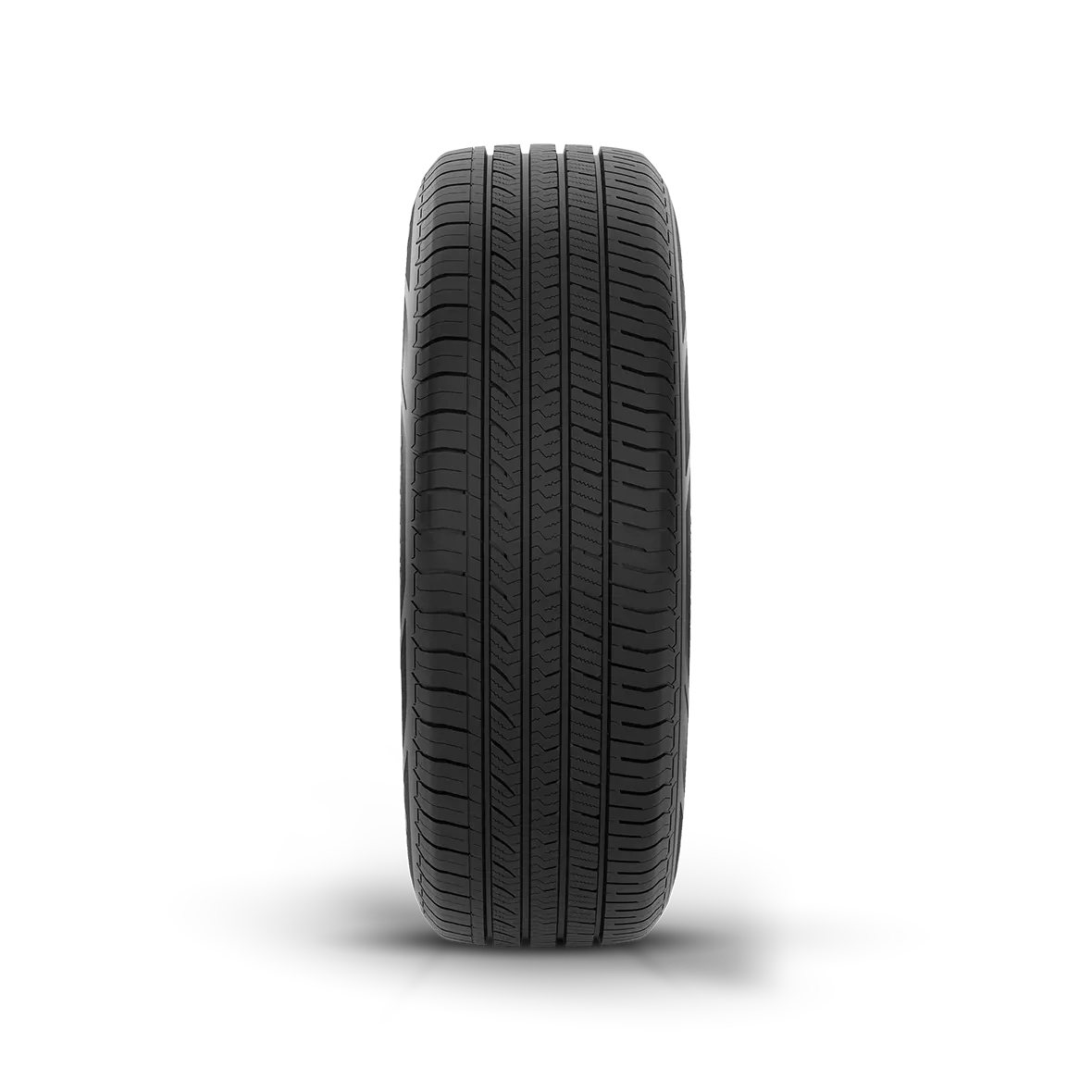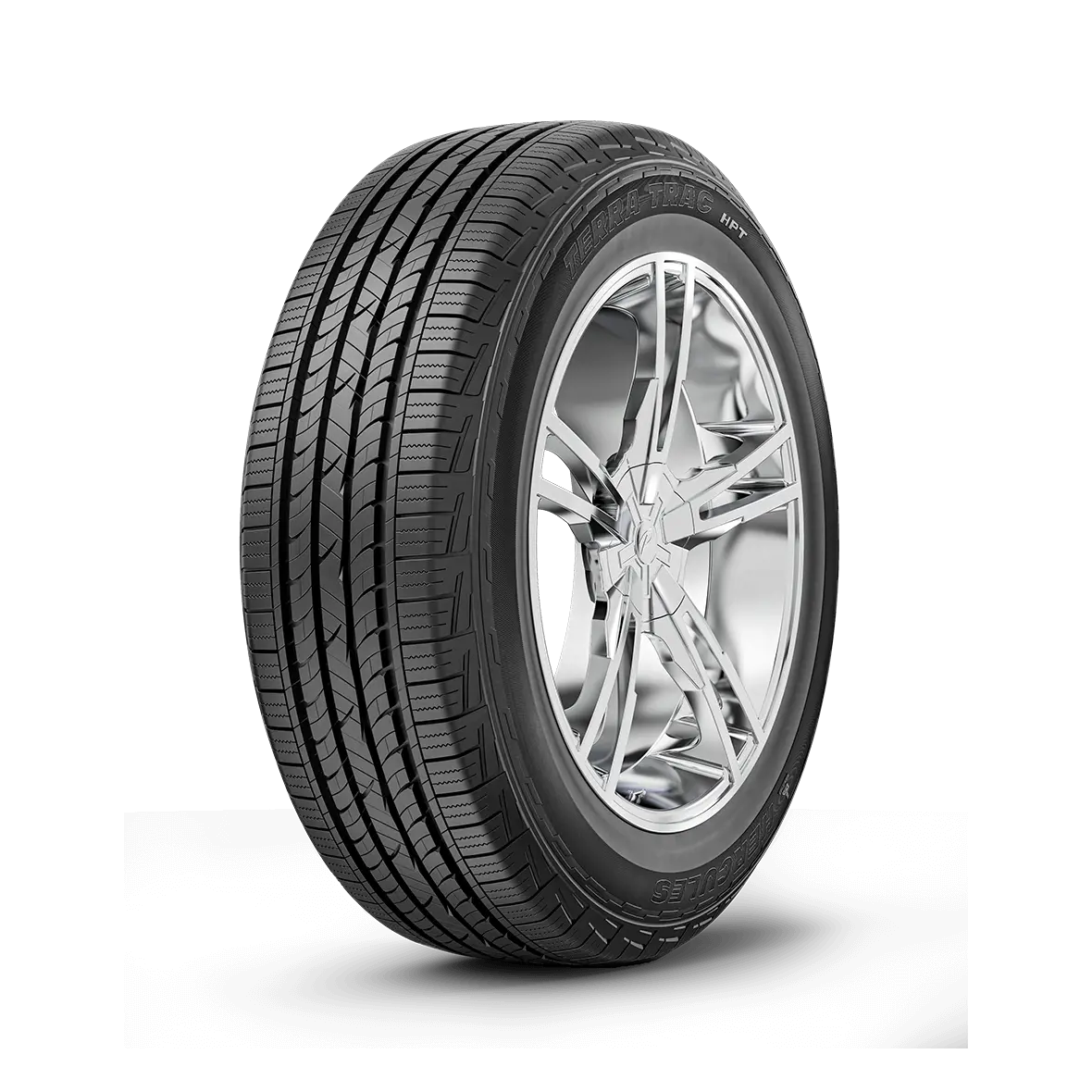Have you ever inspected your vehicle and wondered why the patterns on your tires look so different from one another? Those tire patterns, known as tread designs, play a crucial role in how well your tires grip the road and handle various driving conditions.
Knowing how tread designs affect your tire performance can help you determine which tire will be best for your journey. Read on to learn the basics of tire tread design and determine how to choose the right tire tread for your vehicle.
What is tread design?
Tread design refers to the pattern of grooves, channels, and ridges on the surface of a tire. It's not just for show – each element serves a specific purpose, influencing how the tire interacts with the road.
1. Tire Tread Patterns Offer Increased Traction
One of the primary functions of tire tread is to provide traction, or grip, on (or off) the road surface. Different tread designs are optimized for various conditions:
- Wet Roads: Tires encounter reduced traction when roads are wet. Tread patterns with deep grooves and channels help evacuate water from beneath the tire, allowing it to maintain contact with the road surface. This minimizes the risk of hydroplaning and improves traction on wet roads.
The Hercules Roadtour Connect AS tire is a great option for those looking for a tire that handles well in rainy conditions. It has intricately placed tread blocks and intentional tread design elements that work in tandem to enable greater control for braking and stability in inclement weather conditions and traction year-round. Additionally, the Roadtour Connect AS was designed with four wide longitudinal grooves to support improved water evacuation effectively combating hydroplaning.

The Hercules Roadtour Connect AS tire is an all-season touring tire that delivers reliable performance and a more comfortable ride. The Roadtour Connect AS connects all the dots, keeping you and your family more connected to the drive all year long, and is offered in 41 different fitments.
- Dry Roads: On dry roads, tires with a more solid tread pattern featuring larger tread blocks or ribs provide increased contact area with the road. This enhances traction during cornering, acceleration, and braking, improving overall handling and performance.
- Snow and Ice: Driving in snowy or icy conditions requires specialized tread designs and tire types, dependent on your location or day-to-day commute. For instance, winter tires such as the Hercules AVALANCHE® RT, TT and XUV, are suitable for regions that receive heavy snow and freezing temperatures due to having an advanced tread, thinner sipes and biting edges for greater grip.

The Hercules Avalanche RT is a winter tire engineered to handle extreme winter driving conditions with cool confidence. The Avalanche RT is ideal for those wanting to explore the great outdoors, even in inclement weather, and is offered in 48 different fitments.
Premium all-terrain, all-season tires like the TERRA TRAC® AT X-VENTURE and AT X-JOURNEY tires are equipped an innovative tread block design that includes tusk grooves to keep the tread clear of mud and dirt and tread grooves for maximum off-road and all-terrain traction.

The premium all-terrain, all-season Hercules Terra Trac AT-X Venture is versatile in handling the open road or treacherous terrain. The Terra Trac AT-X Venture is great for the adventure-seeker and is offered in 37 different fitments.
- All Weather: All-weather tires benefit drivers by providing responsive handling and reliable traction on any surface, in any season, thanks to their specialized tread design. For instance, the TERRA TRAC® CROSS-V AW tire is optimized with a zig-zag tread pattern design to minimize tread block movement during braking for better stability and control.

The Hercules TERRA TRAC CROSS-V AW is a premium, all-weather tire that is designed to handle a variety of weather conditions without requiring seasonal tire changes. The Hercules TERRA TRAC CROSS-V AW tire is engineered for highly responsive handling on any surface, in any season, citywide to countryside, and is available in 39 sizes to fit today’s popular CUV's, SUV's and Light Trucks.
2. Tire Tread Patterns Improve Handling and Stability
In addition to traction, tread design also influences a vehicle's handling and stability:
- Cornering: Tires with tread patterns designed to provide ample grip during cornering enhance stability and control, like ultra-high performance (UHP) tires that allow for smoother and more precise maneuvers.
- Braking: Effective braking relies on the tire's ability to maintain traction with the road surface. Tread designs that maximize contact area and move water away from the tire improve braking performance, reducing stopping distances and enhancing protection.
Premium ultra-high-performing tires, like the Hercules Raptis R-T6 and R-T6X, offer an increased contact patch to promote even wear, longer tread life, and superior control. Its advanced tread design delivers ultra-high performance in any season, including wet conditions and winter weather.

The Hercules Raptis R-T6 is an ultra-high-performing tire, offered in 47 sizes for passenger and sport sedans. It is designed with a combination of enhanced traction, handling and performance.
3. Tire Tread Patterns Can Decrease Noise and Increase Comfort
While not directly related to traction and handling, tread design can also impact ride comfort and noise levels:
- Noise Reduction: Some tread patterns are engineered to minimize road noise, resulting in a quieter and more comfortable driving experience, especially on paved roads. A great option is the Hercules TERRA TRAC® HPT. As an all-season tire, it has heavy-density siping and grooves to provide superior traction in wet and winter conditions, while reduced stone retention extends tread life.

The Hercules Terra Trac HPT is a highway all-season SUV/CUV tire, designed for drivers who want excellent on-road comfort, improved wet surface traction and winter performance. The Terra Trac HPT is perfect for the daily commute and is offered in 27 different fitments.
- Comfort: Tires with softer compounds and more flexible tread elements may offer a smoother ride absorbing bumps and imperfections in the road surface for enhanced comfort.
The Hercules Roadtour Connect PCV offers just that. It's optimized tread contact patch allows for a quieter ride and predictable control while improving fuel efficiency.

The Hercules Roactour Connect PCV is an all-season touring tire offered in 39 sizes, designed to promote increased tread life and enhanced performance in all-season conditions.
4. Choosing the Right Tread Design for Your Driving Needs
Selecting the appropriate tread design depends on factors such as climate, driving conditions, and personal preferences. Whether you're navigating city streets, tackling off-road trails in your TIS UT1 by Hercules, or braving winter weather, there's a tread design suited to your needs. The TIS UT1 by Hercules provides superior grip to envelop rocks and other objects when riding on rugged trails.

The TIS UT1 by Hercules is an all-terrain tire designed for those who have a passion for the outdoors, whether for work or recreation, and the ability to drive “off-road” in a variety of terrains, such as sand, silt, loose rocks, gravel, dirt, and soil. It is offered in 13 different sizes for the outdoor enthusiast looking to conquer their next adventure.
Tire tread design is far more than just a cosmetic feature – it's a critical component that directly impacts traction, handling, and overall driving performance.
By understanding how different tire types and tread patterns influence your vehicle's behavior on the road, you can make informed choices when selecting tires, ensuring a secure and enjoyable driving experience. Find a Hercules tire that fits your lifestyle, driving needs and preferred performance features today.

Why Tire Tread Patterns Impact Driving Performance
A Guide to Understanding Tire Tread Design